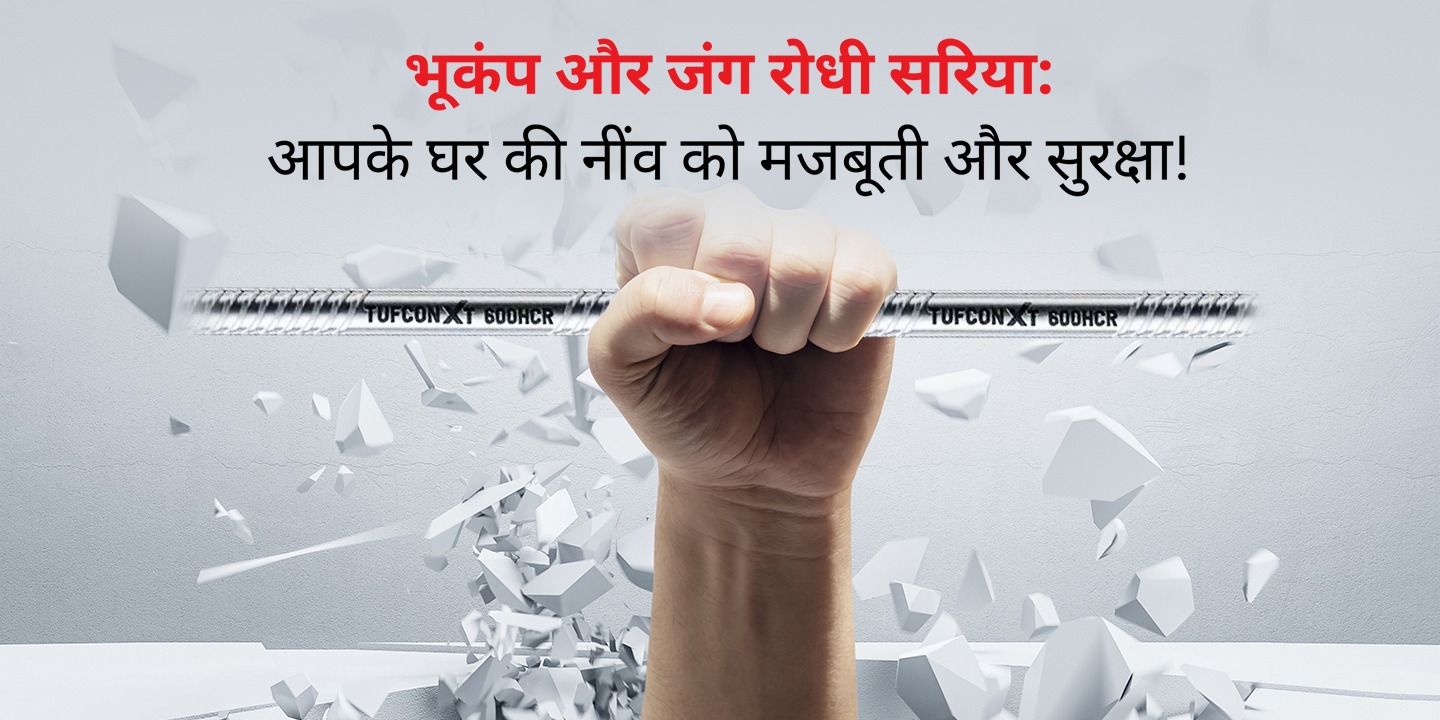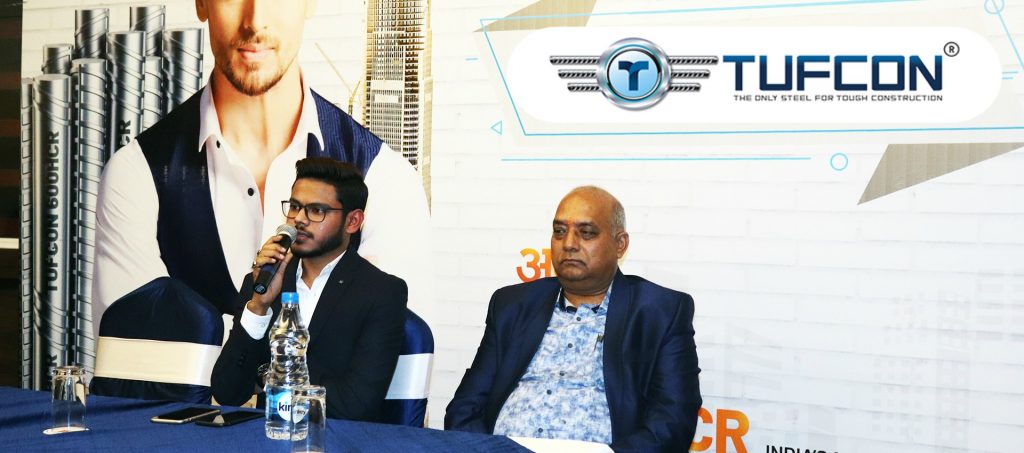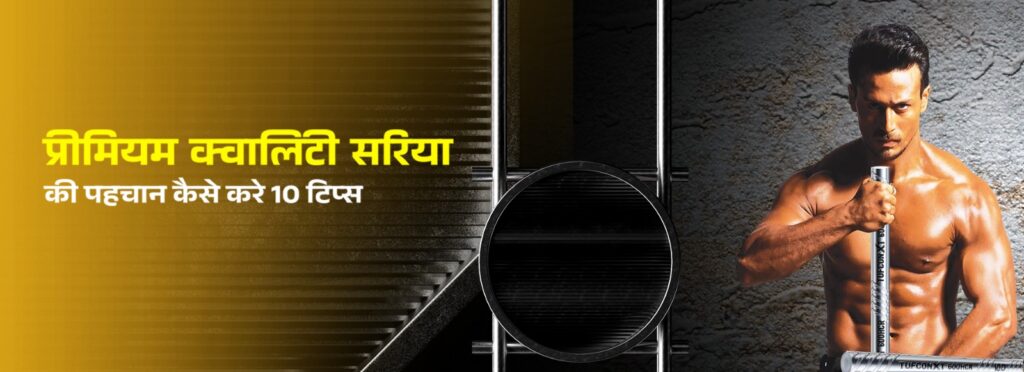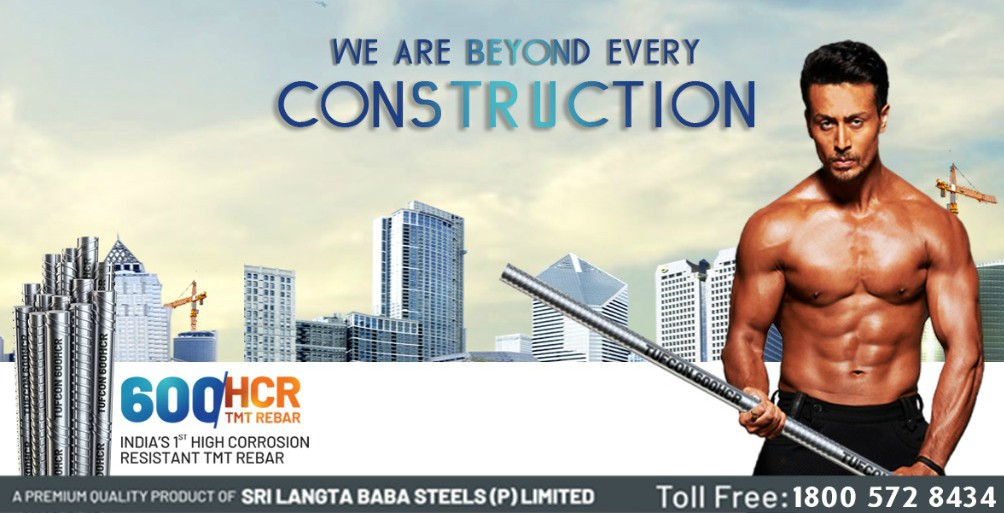When it comes to constructing safe, resilient, and long-lasting structures, the choice of TMT bars is paramount and here these specialized steel bars are the backbone of modern construction, providing the necessary strength, ductility, and earthquake resistance that traditional rebar often lacks. The unique thermo-mechanical treatment process, involving quenching, self-tempering, and atmospheric cooling, creates a tough outer layer and a soft, ductile core, making them ideal for everything from residential buildings to towering infrastructure projects.
In India, a booming construction sector means a plethora of TMT bar manufacturers. But which ones truly stand out for their durability and longevity? Here’s a look at the
9 Most Durable and Long-Lasting TMT Bars in India
1. Tufcon
Tufcon has emerged as a reliable name in the Indian TMT bar market, known for its focus on quality and offering a range of grades suitable for various construction needs. They aim to provide superior strength and ductility, ensuring structural integrity and longevity. Tufcon bars are available in grades like Fe 500, Fe 550, and Fe 600 HCR, indicating their strong yield strength and suitability for different applications. They are gaining recognition for offering quality materials at competitive prices.
Why Tuifcon TMT Bars Stand Out:
✅ Superior Durability: Manufactured using advanced German Thermex technology, Tuifcon TMT Bars resist corrosion, fatigue, and wear — ensuring your building’s structural integrity for decades.
✅ Earthquake & Fire Resistant: With high ductility and excellent thermal stability, Tuifcon TMT Bars provide superior resistance to natural disasters like earthquakes and fires, safeguarding lives and property.
✅ High Yield Strength: The bars are designed with a strong outer surface and soft inner core, offering exceptional flexibility without compromising on strength. This unique combination ensures crack-free construction even in complex designs.
✅ Consistent Quality: Tuifcon maintains strict quality control throughout the production process, resulting in bars that conform to BIS standards and perform uniformly across batches.
✅ Sustainability Focus: Eco-conscious manufacturing processes and low carbon footprint practices make Tuifcon TMT a responsible choice for modern construction.
Applications:
- Residential Buildings
- Commercial Complexes
- Bridges & Flyovers
- Dams & Infrastructure Projects
- Industrial Sheds & Warehouses
Trusted Across India
With a wide distribution network and a solid track record, Tuifcon TMT has become a symbol of trust and reliability for engineers, architects, and builders across India. Whether you’re planning a home, a high-rise, or a highway – Tuifcon TMT Bars ensure your foundation remains unshakable.
2. Maithan Steel
Maithan Steel and Power Limited has carved a niche with its commitment to quality and innovation. Their TMT bars are known for their enhanced resistance to wear and tear, making them a strong choice for projects demanding long-lasting structural elements. Maithan TMT bars are available in grades like Fe 550D and Fe 600, suitable for various construction types including high-rise buildings and industrial structures. Their advanced manufacturing process focuses on minimizing impurities, thereby improving overall durability.
3. TATA TMT
A name synonymous with trust and quality in India, Tata Tiscon is a leading choice for TMT bars. Manufactured from virgin iron ore and pure steel, Tata Tiscon bars, particularly the 500SD grade (Super Ductile), are known for their superior strength, flexibility, and enhanced earthquake resistance. Their unique design promotes better bonding with cement, allowing for greater load-bearing capacity and potentially reducing the number of rebars required. Tata Tiscon is also recognized for its environmental sustainability, being India’s first GreenPro certified rebar.
4. Jindal
Jindal Panther TMT Rebars, a product of Jindal Steel & Power Limited, are a prime example of strength and flexibility in construction. Utilizing the latest HYQST (High Yield Quenched & Self Tempered) technology, Jindal TMT bars feature a soft ferrite-pearlite core that boosts ductility without compromising strength. Their Fe 550D grade is particularly favored for large-scale constructions like high-rises, dams, and bridges, where both stability and elasticity are crucial. They are also known for their enhanced resistance to wear and tear.
5. SAIL
Steel Authority of India Limited (SAIL) is one of the oldest and most trusted steel manufacturers in the country. Their TMT bars are recognized for their high tensile strength, flexibility, and suitability for earthquake-prone regions. SAIL TMT bars are widely used in various Reinforced Cement Concrete (RCC) projects, infrastructure, and marine construction, including bridges, dams, and high-rises. They offer grades like Fe 550D, EQR, and SWQR, and are known for their weldability, bendability, and fatigue resistance.
6. JSW
JSW Steel’s TMT bars, branded as JSW Neosteel, are manufactured through a primary production process using virgin iron ore, ensuring high purity and superior quality. JSW Neosteel utilizes HYQST technology to produce toughened high-strength TMT bars. They are known for consistent quality across the bar, excellent bonding with cement due to well-defined ribs, and superior seismic resistance. JSW offers grades like Neosteel 550D, Neosteel 600 (ultra-premium, ultra-high strength), and Neosteel CRS (corrosion-resistant), catering to diverse construction needs, including residential, commercial, and infrastructure projects.
7. Elegant Steel
Elegant Steel boasts of producing primary quality steel TMT bars in integrated steel plants, ensuring stringent quality checks throughout the manufacturing process. Their QST (Quenched and Self-Tempered) bars exhibit consistent superior strength and high ductility/flexibility, essential for safe structures. Elegant TMT bars are particularly known for their corrosion resistance, fire resistance, and high shock-resistance, making them suitable for critical civil construction purposes such as power plants, dams, long-span bridges, and structures in seismic zones. They claim to offer up to 20% stronger concrete structures with less steel usage.
8. Kamdhenu TMT
Kamdhenu TMT bars are a widely recognized brand, providing a good balance of flexibility and strength. They are frequently used in commercial, residential, and industrial projects across India. Kamdhenu Nxt is a notable product, known for its strong bonding with concrete and overall durability. The brand offers various grades like Fe 500 and Fe 500D, making them a versatile choice for different construction requirements.
9. Satya Steel
Satya Steel, a subsidiary of Shreesatya Group, stands out for its TMT bars, particularly in Eastern India. Produced using Thermex® technology, Satya TMT Bars come in grades like Fe500, Fe500D, Fe550, Fe550D & Fe600, as well as EQR & CRS quality. They highlight features like excellent elongation, bend, and re-bend properties, superior weldability due to low carbon content, and enhanced ductility for seismic resistance. Satya TMT bars are also noted for their superior bonding with concrete, fire resistance, and potential cost savings due to their strength and reduced quantity requirements.
5 FAQs about TMT Bars
1. What exactly are TMT bars and how are they different from traditional steel bars?
TMT stands for Thermo-Mechanically Treated. TMT bars are manufactured using a unique process that involves rapid quenching of hot-rolled steel bars, followed by self-tempering and atmospheric cooling. This process creates a tough outer surface (tempered martensite) and a soft, ductile inner core (ferrite-pearlite). Traditional steel bars, often cold-twisted, lack this dual-phase microstructure, making them less ductile and more prone to brittle fracture, especially under seismic loads. TMT bars offer superior strength, ductility, bendability, weldability, and corrosion resistance.
What do the grades like Fe 500D or Fe 550SD mean?
The “Fe” denotes ferrous (iron). The number (e.g., 500, 550, 600) represents the minimum yield strength of the bar in N/mm². A higher number indicates greater strength. The “D” in Fe 500D signifies “Ductility,” meaning the bar has higher elongation properties, making it more flexible and ideal for earthquake-prone zones. “SD” in Fe 500SD (Super Ductile) indicates even higher ductility. Choosing the right grade depends on the specific structural requirements and seismic considerations of your project.
Why is ductility important in TMT bars, especially for earthquake-prone areas?
Ductility refers to a material’s ability to deform significantly without fracturing. In earthquake-prone areas, structures are subjected to immense lateral forces. A ductile TMT bar can absorb and dissipate seismic energy by deforming rather than breaking, preventing sudden collapse and giving occupants time to evacuate. This makes structures more resilient and safe during seismic events.
How do I choose the best TMT bar for my construction project?
Choosing the right TMT bar involves considering several factors:
- Project Type: Residential, commercial, industrial, or infrastructure projects have different strength and ductility requirements.
- Seismic Zone: For earthquake-prone areas, higher ductility grades (like Fe 500D or Fe 550SD) are crucial.
- Budget: While quality is paramount, compare prices and consider the long-term value.
- Brand Reputation: Opt for established brands with a proven track record of quality and reliability.
- Certifications: Look for BIS (Bureau of Indian Standards) certification (IS 1786:2008) and other quality certifications like GreenPro.
- Corrosion Resistance: For coastal areas or places with high humidity, consider TMT bars with enhanced corrosion resistance.
Are TMT bars eco-friendly?
Many leading TMT bar manufacturers are adopting more sustainable production practices. Some brands, like Tata Tiscon, are GreenPro certified, indicating that their manufacturing process uses fewer resources and generates less environmental impact. The durability and longevity of TMT bars also contribute to sustainability by reducing the need for frequent repairs or replacements, thus minimizing material consumption over the structure’s lifespan.



